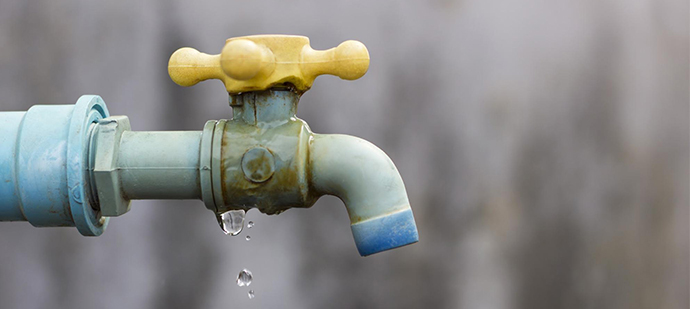Just how to Examine If Your Residence Has a Concealed Leakage
Just how to Examine If Your Residence Has a Concealed Leakage
Blog Article
This post in the next paragraphs involving Top leak detection hacks is pretty much remarkable. Don't overlook it.

Early detection of leaking water lines can minimize a potential disaster. Some little water leakages may not be noticeable.
1. Check Out the Water Meter
Every home has a water meter. Checking it is a surefire manner in which assists you discover leakages. For starters, turn off all the water sources. Guarantee nobody will purge, make use of the faucet, shower, run the cleaning maker or dishwashing machine. From there, most likely to the meter as well as watch if it will change. Since no one is utilizing it, there ought to be no activities. If it moves, that shows a fast-moving leak. If you discover no modifications, wait a hr or two and also check back once more. This means you may have a slow-moving leak that might also be underground.
2. Check Water Usage
Analyze your water bills as well as track your water intake. As the one paying it, you ought to see if there are any inconsistencies. If you detect sudden changes, despite your usage being the same, it indicates that you have leakages in your plumbing system. Remember, your water expense need to fall under the same variety on a monthly basis. A sudden spike in your expense suggests a fast-moving leakage.
A constant increase every month, even with the very same habits, reveals you have a slow-moving leakage that's likewise slowly intensifying. Call a plumber to completely inspect your property, especially if you feel a warm location on your flooring with piping below.
3. Do a Food Coloring Examination
When it pertains to water usage, 30% comes from toilets. Examination to see if they are running appropriately. Decrease specks of food color in the tank and wait 10 mins. If the shade in some way infiltrates your bowl during that time without flushing, there's a leak in between the tank and also dish.
4. Asses Exterior Lines
Don't forget to check your outside water lines as well. Ought to water permeate out of the connection, you have a loosened rubber gasket. One tiny leakage can throw away lots of water and also surge your water costs.
5. Check and also Evaluate the Scenario
House owners should make it a routine to examine under the sink counters as well as also inside closets for any bad odor or mold and mildew development. These two red flags suggest a leakage so prompt focus is required. Doing routine examinations, even bi-annually, can save you from a major trouble.
Examine for stainings as well as deteriorating as a lot of pipes and also devices have a life span. If you think leaking water lines in your plumbing system, do not wait for it to rise.
Early discovery of leaking water lines can mitigate a potential calamity. Some little water leaks may not be noticeable. Inspecting it is a surefire means that aids you find leaks. One little leakage can squander loads of water and increase your water expense.
If you think dripping water lines in your plumbing system, do not wait for it to rise.
WARNING SIGNS OF WATER LEAKAGE BEHIND THE WALL
PERSISTENT MUSTY ODORS
As water slowly drips from a leaky pipe inside the wall, flooring and sheetrock stay damp and develop an odor similar to wet cardboard. It generates a musty smell that can help you find hidden leaks.
MOLD IN UNUSUAL AREAS
Mold usually grows in wet areas like kitchens, baths and laundry rooms. If you spot the stuff on walls or baseboards in other rooms of the house, it’s a good indicator of undetected water leaks.
STAINS THAT GROW
When mold thrives around a leaky pipe, it sometimes takes hold on the inside surface of the affected wall. A growing stain on otherwise clean sheetrock is often your sign of a hidden plumbing problem.
PEELING OR BUBBLING WALLPAPER / PAINT
This clue is easy to miss in rooms that don’t get much use. When you see wallpaper separating along seams or paint bubbling or flaking off the wall, blame sheetrock that stays wet because of an undetected leak.
BUCKLED CEILINGS AND STAINED FLOORS
If ceilings or floors in bathrooms, kitchens or laundry areas develop structural problems, don’t rule out constant damp inside the walls. Wet sheetrock can affect adjacent framing, flooring and ceilings.
https://www.servicemasterbyzaba.com/blog/how-to-detect-water-leakage-in-walls/

Do you like reading up on Finding hidden leaks? Try leaving a review down below. We would be delighted to see your thinking about this write up. We hope that you come back again in the future. You should set aside a second to promote this blog entry if you enjoyed reading it. Thanks for your time spent reading it.
Report this page